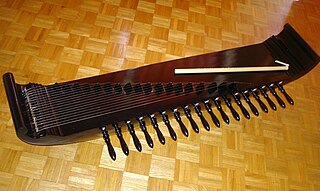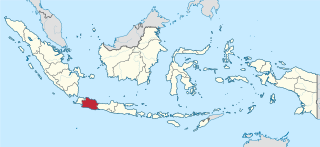Related Research Articles
In poetry, metre or meter is the basic rhythmic structure of a verse or lines in verse. Many traditional verse forms prescribe a specific verse metre, or a certain set of metres alternating in a particular order. The study and the actual use of metres and forms of versification are both known as prosody.

Poetry, also called verse, is a form of literature that uses aesthetic and often rhythmic qualities of language − such as phonaesthetics, sound symbolism, and metre − to evoke meanings in addition to, or in place of, a prosaic ostensible meaning. A poem is a literary composition, written by a poet, using this principle.
A spondee is a metrical foot consisting of two long syllables, as determined by syllable weight in classical meters, or two stressed syllables in modern meters. The word comes from the Greek σπονδή, spondḗ, 'libation'.

In prosody, alliterative verse is a form of verse that uses alliteration as the principal ornamental device to help indicate the underlying metrical structure, as opposed to other devices such as rhyme. The most commonly studied traditions of alliterative verse are those found in the oldest literature of the Germanic languages, where scholars use the term 'alliterative poetry' rather broadly to indicate a tradition which not only shares alliteration as its primary ornament but also certain metrical characteristics. The Old English epic Beowulf, as well as most other Old English poetry, the Old High German Muspilli, the Old Saxon Heliand, the Old Norse Poetic Edda, and many Middle English poems such as Piers Plowman, Sir Gawain and the Green Knight, and the Alliterative Morte Arthur all use alliterative verse.

É, é (e-acute) is a letter of the Latin alphabet. In English, it is used for loanwords, romanization or occasionally as a pronunciation aid in poetry.

The kacapi is a traditional zither of Sundanese people in Indonesia. This musical instrument is derived from Chinese guzheng, same as the Japanese koto, the Mongolian yatga, the Korean gayageum, the Vietnamese đàn tranh and the Kazakh jetigen. The kacapi played as the main accompanying instrument in the Tembang Sunda or Mamaos Cianjuran, kacapi suling genre, pantun stories recitation or an additional instrument in Gamelan Degung performance.

West Java is a province of Indonesia on the western part of the island of Java, with its provincial capital in Bandung. West Java is bordered by the province of Banten and the country's capital region of Jakarta to the west, the Java Sea to the north, the province of Central Java to the east and the Indian Ocean to the south. With Banten, this province is the native homeland of the Sundanese people, the second-largest ethnic group in Indonesia.

Pantun is a Malay oral poetic form used to express intricate ideas and emotions. It is generally consists of even-numbered lines and based on ABAB rhyming schemes. The shortest pantun consists of two lines better known as the pantun dua kerat in Malay, while the longest pantun, the pantun enam belas kerat have 16 lines. Pantun is a disjunctive form of poetry which always come in two parts, the first part being the prefatory statement called pembayang or sampiran that has no immediate logical or the narrative connection with the second or closing statement called maksud or isi. However, they are always connected by the rhymes and other verbal associations, such as puns and repeating sounds. There is also an oblique but necessary relationship and the first statement often turns out to be a metaphor for the second one. The most popular form of pantun is the quatrain, and the couplet (two-lines), which both featured prominently in the literature and modern popular culture.
The rondelet is a brief French form of poetry. It contains a refrain, a strict rhyme scheme and a distinct meter pattern.

A décima is a ten-line stanza of poetry. The most popular form is called décima espinela after Vicente Espinel (1550–1624), a Spanish writer, poet, and musician from the Siglo de Oro who used it extensively throughout his compositions.
Indonesian slang, or informal Indonesian language is a term that subsumes various vernacular and non-standard styles of expression used throughout Indonesia that are not necessarily mutually intelligible. Regional slang from the capital of Jakarta, based on Betawi language, is however heavily exposed and promoted in national media, and considered the de facto Indonesian slang. Despite its direct origins, Indonesian slang often differs quite significantly in both vocabulary and grammatical structure from the most standard form of Indonesia's national language. These expressions are neither standardized nor taught in any formal establishments, but rather function in daily discourse, usually in informal settings. Several dictionaries of bahasa gaul has been published. Indonesian speakers regularly mix several regional slangs in their conversations regardless of origin, but depending on the audience and the familiarity level with the listeners.
This is a glossary of poetry.
Standard Sundanese script is a writing system which is used by the Sundanese people. It is built based on Old Sundanese script which was used by the ancient Sundanese between the 14th and 18th centuries. Currently the standard Sundanese script is also commonly referred to as the Sundanese script.
Pantun Sunda is a type of Sundanese oral narrative performance interspersed with songs and music played on a kacapi, a kind of zither. A pantun is intended to be recited during an evening-length performance during which a single performer relates the story of a hero's initiation: The protagonist leaves his kingdom in order to seek experiences, beautiful princesses to become his wife, power, other kingdoms to subject, the realization of a dream ; after having succeeded in reaching his goal he finally returns to his kingdom. Alongside descriptions of historical events, the stories often contain mythical elements. Pantun were originally not written down, the bards often being illiterate and in many cases blind. Originally the performances had a sacred character, as was clear from the offerings made at the beginning of the recitation and also from the content of the introductory part of the story, called rajah, which was an invocatory song, imploring the help of divine figures to ward off bad influences. The linguistic form of the pantun was not strictly fixed, however the dominant form employed in most pantun is the octosyllabic verse. For a detailed description of the nature and form of a Sundanese pantun you are referred to Eringa (1949), to Hermansoemantri (1977–79).
Vietnamese poetry originated in the form of folk poetry and proverbs. Vietnamese poetic structures include six-eight, double-seven six-eight, and various styles shared with Classical Chinese poetry forms, such as are found in Tang poetry; examples include verse forms with "seven syllables each line for eight lines," "seven syllables each line for four lines", and "five syllables each line for eight lines." More recently there have been new poetry and free poetry.

King Siliwangi was the ruler of the Kingdom of Pajajaran in West Java from 1482 to 1521. He was a member of the Sunda royal family and was the son of King Jayabaya and Queen Tribuana Tungga Dewi. Siliwangi was a skilled military leader and under his rule, the Kingdom of Pajajaran became one of the most powerful empires in Southeast Asia. He was also a great patron of the arts and helped to promote the development of Javanese culture and art. King Siliwangi was a very popular ruler and was loved by his people. He was assassinated in 1521 by his own brother, Prince Jayeng Resmi.
The empat perkataan is a traditional Southeast Asian poetic form originating from the Malaccan Empire in the 15th century. It was popular among inhabitants of the Riau Archipelago and Malay Peninsula. It is primarily associated with Austronesian languages such as Malay, Tagalog, Sundanese and Javanese, but modern examples can also be found in English. The term is derived from the Malay words for 'four' and 'words'. Singaporean poets including Alvin Pang have been reviving the form for its elegance, versatility and association with Language poetry.
Poetic devices are a form of literary device used in poetry. Poems are created out of poetic devices composite of: structural, grammatical, rhythmic, metrical, verbal, and visual elements. They are essential tools that a poet uses to create rhythm, enhance a poem's meaning, or intensify a mood or feeling.

Sundanese Music is an umbrella term that encompasses diverse musical traditions of the West Java and Banten in western part of Java, Indonesia. The term of "West Java" is preferred by scholars in this field. The word "Sundanese" originally referred to western part of Java Island and has a strong association with the highly centralized Sunda Kingdom based on Java Island and its high culture practiced by the nobleman class in its capital Parahyangan. By contrast, scholars who cover a much broader region lay emphasis on folk culture.

Old Sundanese is the earliest recorded stage of the Sundanese language which is spoken in the western part of Java. The evidence is recorded in inscriptions from around the 12th to 14th centuries and ancient palm-leaf manuscripts from the 15th to 17th centuries AD. Old Sundanese is no longer used today, but has developed into its descendant, modern Sundanese.
References
- ↑ Wim van Zanten, Sundanese Music in the Cianjuran Style, Foris Publications Holland, 1989